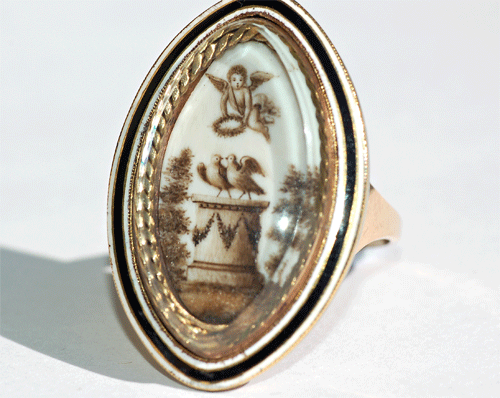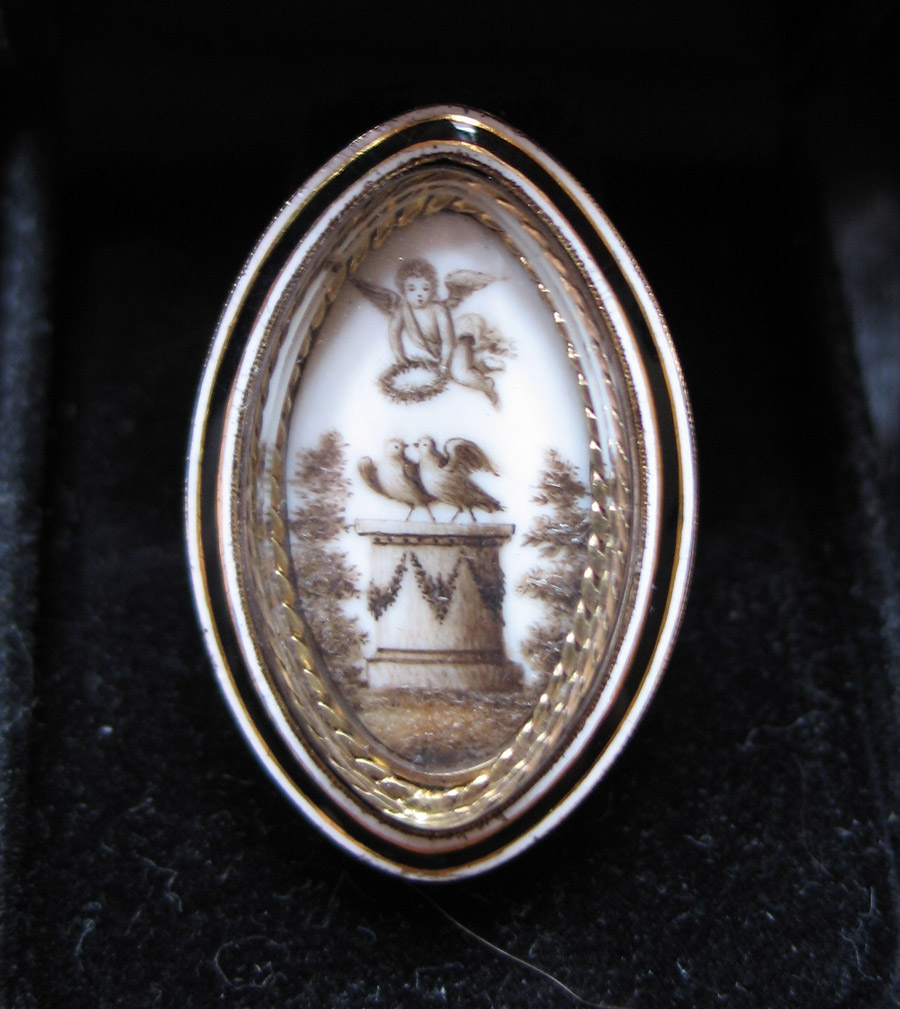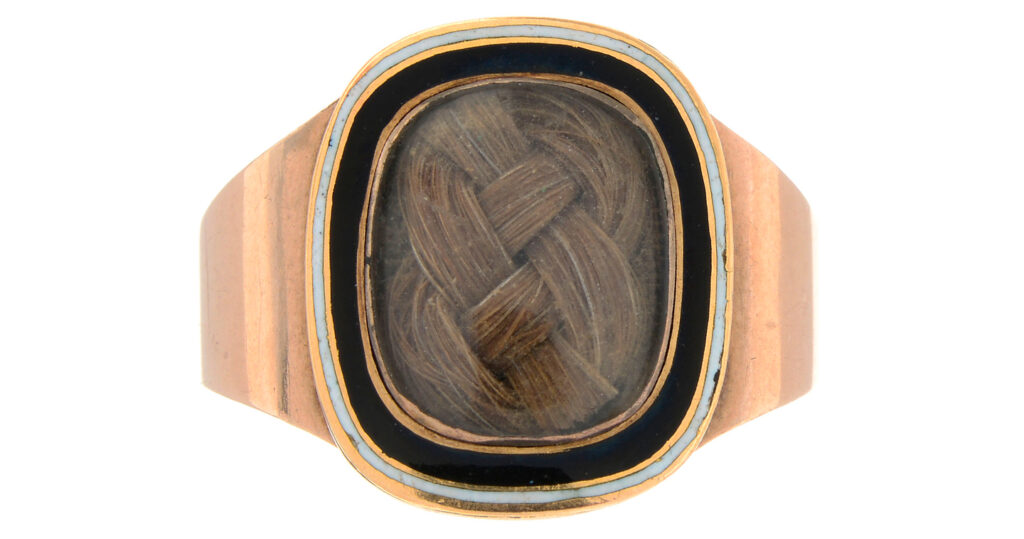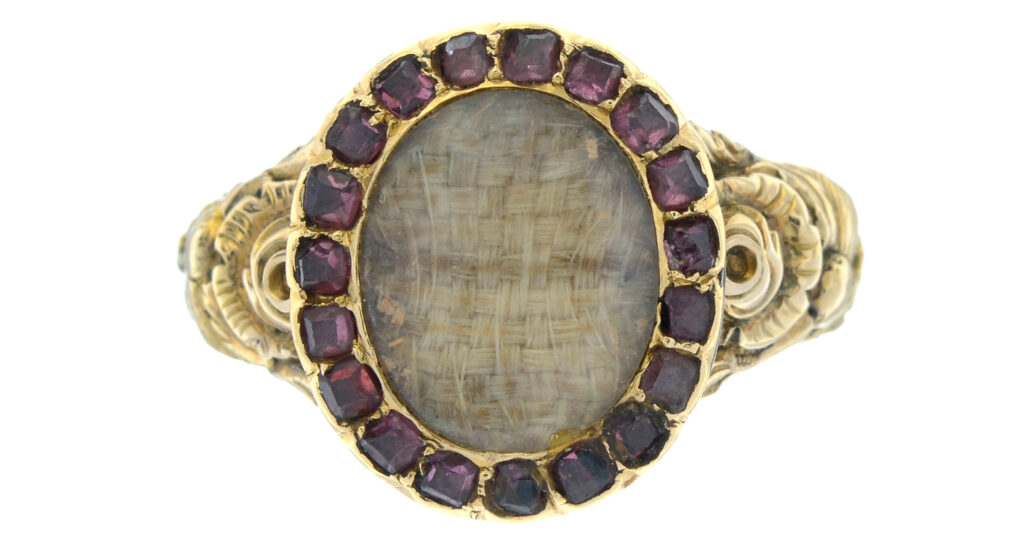Two Lovers Captured in a Sepia Ring From 1792

Then we have this dramatic turn to the humanist movement where the person is the focus of mourning and death, where it was expected to show personal grief.
Fundamentally, this is the definition of love, the need to be with someone, the loss that not having that person causes one’s self. This is why a jewel like this ring is important, as it shows both the sentiments that would be in a love token, given to a person during their life, and also the love that someone would feel within their grief.

There is a cherub offering a crown, suggesting glory of life after death and immortality, two pine trees for fertility, regeneration and fidelity, two love birds, who are looking directly at each other, almost beneath each other’s wings and the unbroken column with garlands. The central focus here are the birds and note how the design of the symbols show a connection in duality. Two lovers and a monument to eternal love is the central conceit to this piece and that is a focus point that jewels of previous times could not depict. Here, the person, the lover has a keepsake of their loved one and it relates directly to the wearer.
In terms of its construction, it is good to note that the glass (or crystal) has been replaced over time. This would have been domed, rather than the hard, faceted edge, which is a modern introduction.
Often when asked about not wearing jewels of a personal nature for someone else, it’s pieces like this that were created for the love of an individual, which is wonderful to admire, but not to interfere with.







